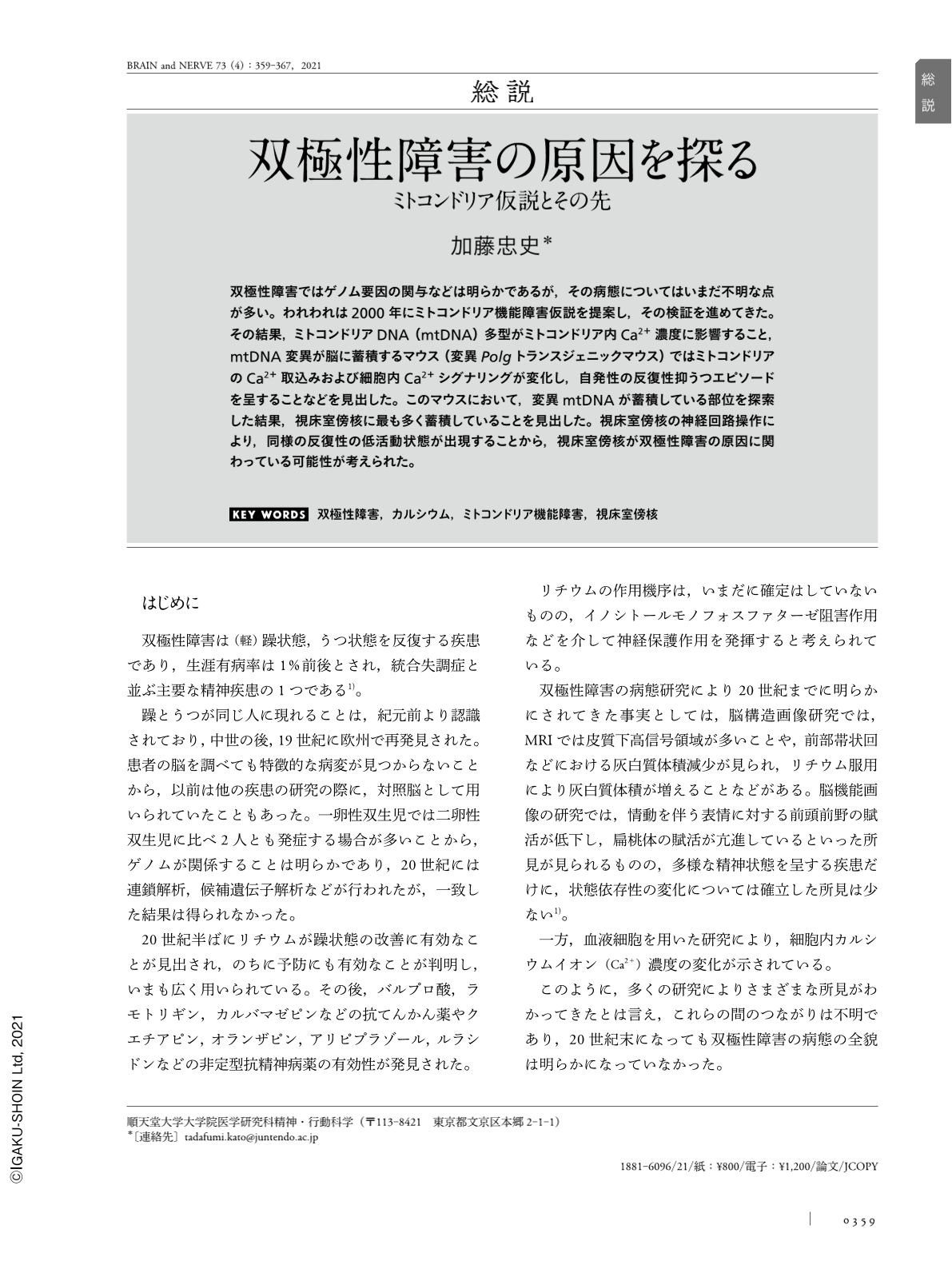Japanese
English
- 有料閲覧
- Abstract 文献概要
- 1ページ目 Look Inside
- 参考文献 Reference
双極性障害ではゲノム要因の関与などは明らかであるが,その病態についてはいまだ不明な点が多い。われわれは2000年にミトコンドリア機能障害仮説を提案し,その検証を進めてきた。その結果,ミトコンドリアDNA(mtDNA)多型がミトコンドリア内Ca2+濃度に影響すること,mtDNA変異が脳に蓄積するマウス(変異Polgトランスジェニックマウス)ではミトコンドリアのCa2+取込みおよび細胞内Ca2+シグナリングが変化し,自発性の反復性抑うつエピソードを呈することなどを見出した。このマウスにおいて,変異mtDNAが蓄積している部位を探索した結果,視床室傍核に最も多く蓄積していることを見出した。視床室傍核の神経回路操作により,同様の反復性の低活動状態が出現することから,視床室傍核が双極性障害の原因に関わっている可能性が考えられた。
Abstract
Although the involvement of genomic factors in bipolar disorder is clear, its neural basis remains a question. We proposed the mitochondrial dysfunction hypothesis of bipolar disorder in 2000 and have since been testing it. Our results showed that mitochondrial DNA (mtDNA) polymorphisms affected mitochondrial Ca2+ concentration, and mitochondrial Ca2+ uptake and intracellular Ca2+ signaling were altered. Spontaneous repetitive depressive episodes were seen in mice in which mtDNA mutations accumulated in the brain (mutant Polg transgenic mice). We searched for the brain regions with the accumulation of mutant mtDNA in these mice, and found that it was most abundant in the paraventricular nucleus of the thalamus (PVT). Neural circuit manipulation of the PVT caused similar repetitive hypoactive episodes, suggesting that the PVT may be involved in causing bipolar disorder.

Copyright © 2021, Igaku-Shoin Ltd. All rights reserved.


